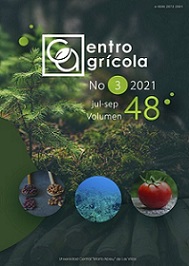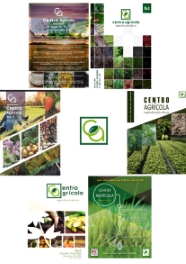SCIENTIFIC ARTICLE
Entomofauna associated to soybean [Glycine max (L.) Merr.] in direct seeding and conventional tillage
Entomofauna asociada a la soya [Glycine max (L.) Merr.] en sistemas de siembra directa y convencional
Arahis Cruz Limonte1, Ubaldo Álvarez Hernández1, Horacio Grillo Ravelo2, Ramón Adalberto Ortega Camacho1, Marlen Cárdenas Morales2,1
1 Departamento de Agronomía, Facultad de Ciencias Agropecuarias, Universidad Central “Marta Abreu” de Las Villas, Carretera a Camajuaní km 5½, Santa Clara, Villa Clara, Cuba. CP 54830.
2 Centro de Investigaciones Agropecuarias, Facultad de Ciencias Agropecuarias, Universidad Central “Marta Abreu” de Las Villas, Carretera a Camajuaní km 5½, Santa Clara, Villa Clara, Cuba. CP 54830.
E-mail: This email address is being protected from spambots. You need JavaScript enabled to view it.
ABSTRACT
The main purpose of this research work was to investigate the effect of the direct seeding and conventional tillage of soybean on the incidence of plagues and natural enemies. The study was carried out on the farm “Día y Noche” of the Basic Unit of Cooperative Production “28 de Octubre” (UBPC, for its Spanish acronym), and in the Laboratories of the Agricultural Research Center of Central University of Las Villas. Field experiments were conducted on an Inceptisol, since November 2013 to May 2014. The soybean cultivar Incasoy – 27 was used. The insects in relation to the development stages of the plant were identified and quantified. In both systems 10 species of phytophagous insects and one of entomophagous insects were quantified; Hedylepta indicata L. stands out with more presence in the direct seeding, while Diabrotica balteata LeConte and the species belong to the family Pentatomidae caused most damage to the plants in conventional tillage.




